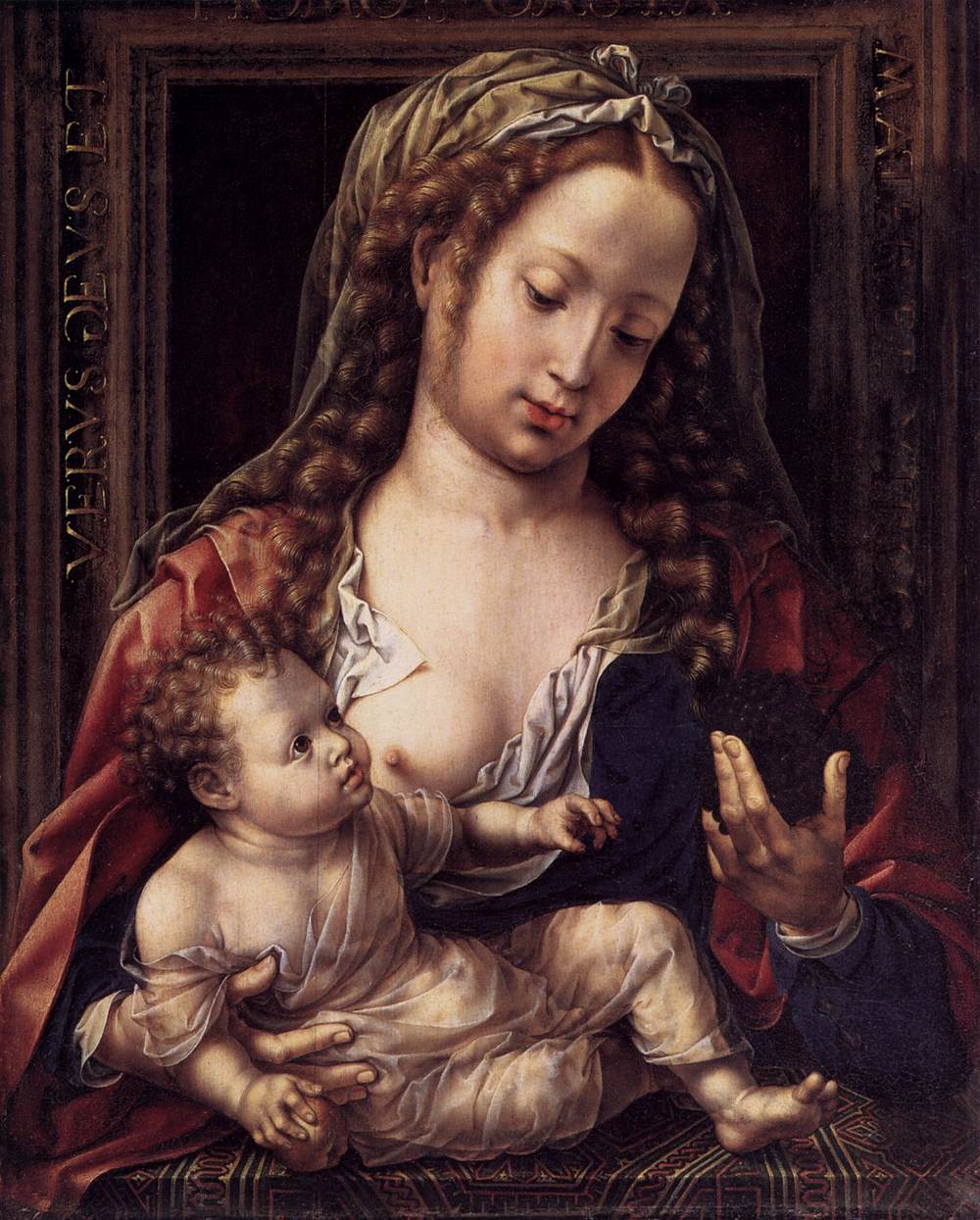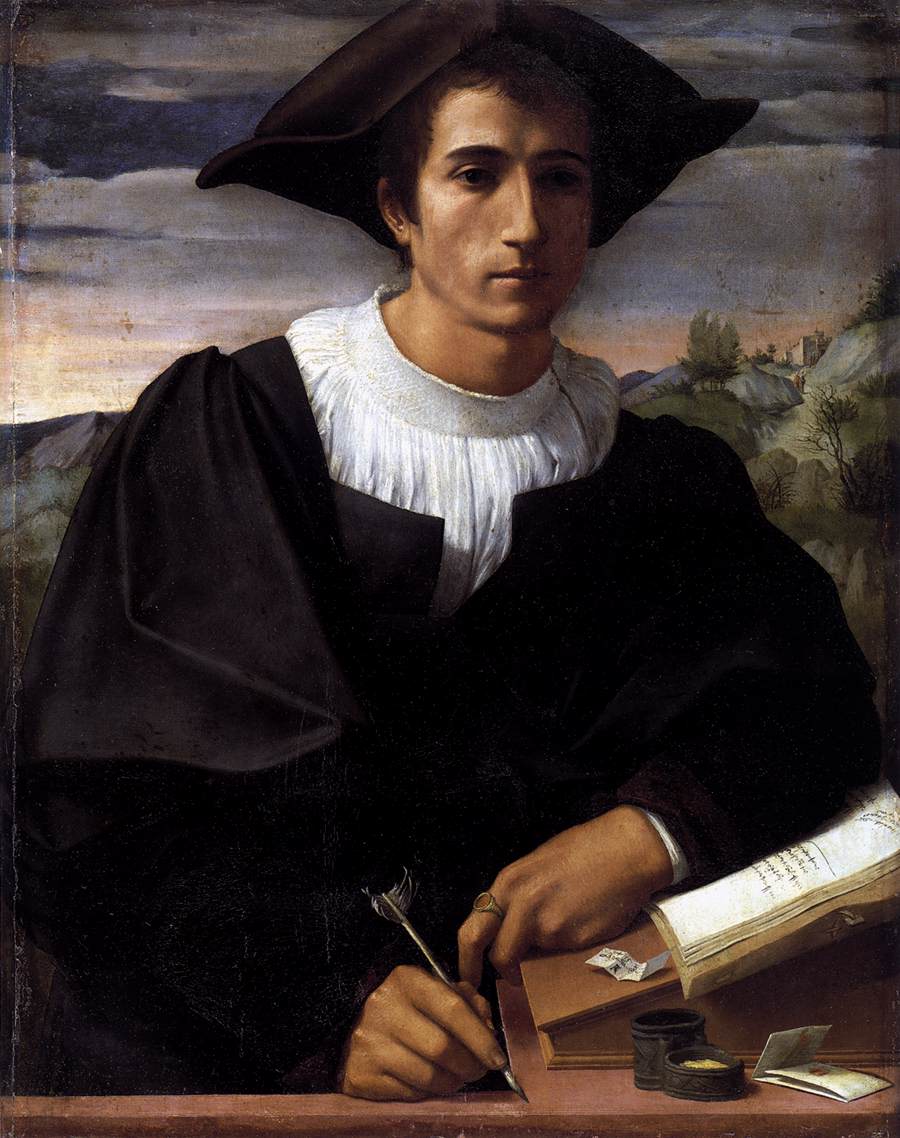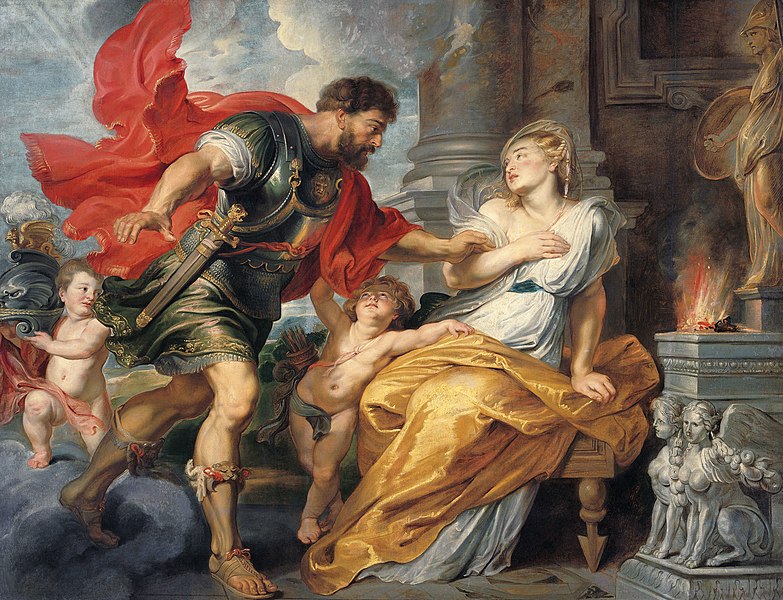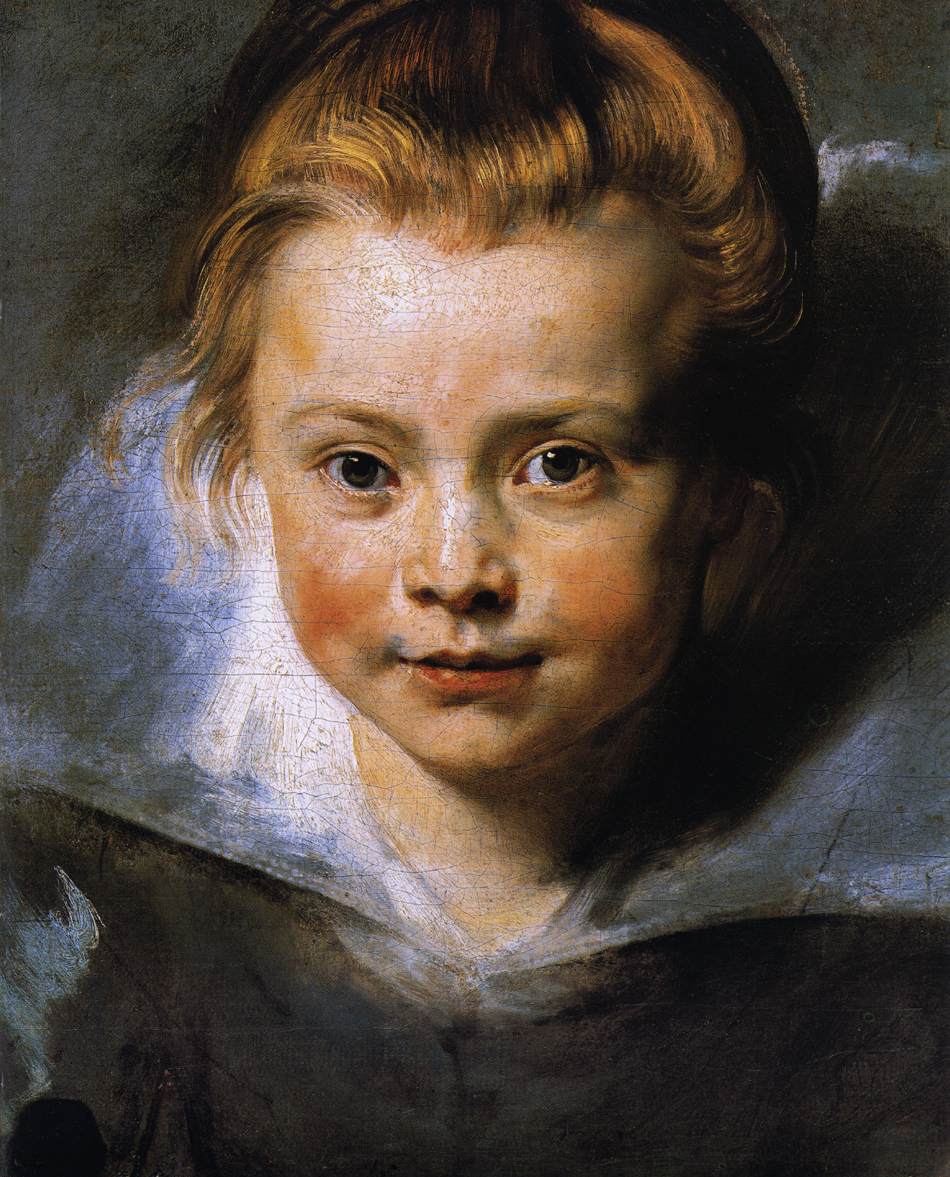Autumn of 2015, the Caumont Centre d’Art in Aix-en-Provence
Art
lovers and patrons since the 16th
century, the Princes
of Liechtenstein have amassed one of the largest private art collections in
Europe. Primarily dedicated to Western art, from the Renaissance to the late 18th century, the Princely Collections include paintings
(approximately 1,700), sculptures, drawings, engravings, furniture, books and
precious objects. The collection was started in the 17thcentury, inspired by the ideals of princely patronage of the
arts, characteristic of the Baroque period, ideals which the family continue to
promote today. If the majority of the Princely Collections is to be found in
Vaduz, a selection is nevertheless accessible to the public in some of the
other family residences, notably in Vienna: the Liechtenstein City Palace (with
its neoclassical and Biedermeier style) and the Liechtenstein Garden Palace
(with its Renaissance and Baroque influences).
THE
PRINCIPALITY OF LIECHTENSTEIN
Bordered
by the Rhine and the Alps, the State of Liechtenstein is situated between the
Austrian province of Vorarlberg and the Swiss cantons of St. Gallen and
Graubünden. This small principality of 160 km2is the last surviving remnant of the Holy Roman Empire,
founded in 962. A constitutional monarchy, with German as its official
language, today it is closely linked to Switzerland. Switzerland represents
Liechtenstein’s diplomatic interests abroad. The two countries share the same
postal system and form a customs and monetary union. The Principality comprises
the former feudal territories of Schellenberg (current-day Oberland) and Vaduz
(current-day Unterland), acquired by Prince Johann Adam Andreas I von
Liechtenstein, respectively in 1699 and 1712. on 23 January 1719, these lands
were united and elevated to the rank of Principality by Emperor Charles VI. In
1806, Liechtenstein became a sovereign state of the Confederation of the Rhine
(1806-1814) with Napoleon’s aid. Between 1815 and 1866, it was part of the
German Confederation and was later attached to Austria, from which it separated
after the revolution of 1921. It was from that time onward that Liechtenstein
forged close ties with Switzerland. Neutral during the Second World War,
Liechtenstein benefitted from an industrial and economic boom in the 1950s.The
current sovereign, Hans-Adam II (b. 1945) has significantly increased the
importance of Liechtenstein on the world stage.
THE
GRAND GALLERY OF THE 16TH
CENTURY
With
the exception of the Italian artworks, the quasi totality of the 16th-century paintings displayed in this room are representative
of the most significant and recent acquisitions by Prince Hans-Adam II. These
include Renaissance paintings from Germany
(The Tax Collectors by Massys, acquired in 2008, and
Venus by Cranach, acquired in 2013),
Flanders (Virgin and Child by Gossaert acquired in 2015),
Holland (Saint Sebastian by Cornelisz. von Haarlem
and Portrait of Alessandro Farnese by Mor, acquired in 2010 and 2015 respectively),
and Spain (Portrait of Don Diego by Sánchez Coello, acquired in 2007).
Quentin
Massys (1466-1530)The Tax Collectors Late 1520s oil on panel - 86,4 x 71,2 cm
Liechtenstein. The Princely Collections, Vaduz–Vienna© LIECHTENSTEIN. The
Princely Collections, Vaduz–ViennaEntered the collections in 2008, acquired by
Prince Hans-Adam II
(The Tax Collectors by Massys, acquired in 2008, and
Lucas
Cranach the Elder (1472-1553)
Venus
1531
oil
on panel, 38.7 x 24.5 cm
Liechtenstein.
The Princely Collections, Vaduz–Vienna
©
LIECHTENSTEIN. The Princely Collections, Vaduz–Vienn
Flanders (Virgin and Child by Gossaert acquired in 2015),
Holland (Saint Sebastian by Cornelisz. von Haarlem
and Portrait of Alessandro Farnese by Mor, acquired in 2010 and 2015 respectively),
and Spain (Portrait of Don Diego by Sánchez Coello, acquired in 2007).
The
human figure is omnipresent in all thirteen paintings, attesting to the return
to favour of the human figure in Renaissance art. In painting, this triumphant
advent of the individual may be seen in both the prevalence of the portrait and
of nudes, as well as the large-scale representation of sacred, historical or
mythological figures.
Focused on the physiognomic and psychological representation of an individual, the art of portraiture, in the Flemish and Italian traditions, comes in the form of intimate likenesses, three-quarter view
(Raphael’s and
Franciabigio’s Portrait of a Man
and Portrait of a Lady by Bernardino da Cotignola), and ceremonial portraits, where the subjects are depicted standing (for example, the portrait of Alessandro Farnese by Antonis Mor) (above). Another aspect of Renaissance art is the prevalence of sacred figures, imbued with human attributes, and oftentimes depicted within an intimate or private setting, such as Jan Gossaert’s Virgin and Child (above.)
Focused on the physiognomic and psychological representation of an individual, the art of portraiture, in the Flemish and Italian traditions, comes in the form of intimate likenesses, three-quarter view
(Raphael’s and
Franciabigio’s Portrait of a Man
Bernardino
Zaganelli da Cotignola (c.1470-c.1510)
Portrait
of a Lady
circa
1500
oil
on panel - 32,7 x 25 cm
Liechtenstein.
The Princely Collections, Vaduz–Vienna
©
LIECHTENSTEIN. The Princely Collections, Vaduz–Vienna
This
piece entered the collections in 1882, sold in 1950, and acquired a second time
in 2003
and Portrait of a Lady by Bernardino da Cotignola), and ceremonial portraits, where the subjects are depicted standing (for example, the portrait of Alessandro Farnese by Antonis Mor) (above). Another aspect of Renaissance art is the prevalence of sacred figures, imbued with human attributes, and oftentimes depicted within an intimate or private setting, such as Jan Gossaert’s Virgin and Child (above.)
Also
common were representations of the saints by Cranach the Elder and Cornelis
Cornelisz. van Haarlem for example, or
Cristofano Allori
Judith with the Head of Holofernes,
1613 - oil on canvas - 141 x 117 cm
Liechtenstein. The Princely Collections, Vaduz–Vienna © LIECHTENSTEIN. The Princely Collections, Vaduz–Vienna
figures from the Old Testament (Cristofano Allori). These figures tended to dominate the entire composition.
From 1509 onward, Lucas Cranach the Elder painted a large amount of naked Venuses, standing, sitting or lying down. If some convey an explicit moral message, by means of the presence of the goddess of love or a moralizing inscription in Latin, others, like this one, do not. According to a formula of which he was particularly fond, the German artist paints the young woman against a black background, with her feet on stony ground. He displays his mastery of the female canon through this slender body, endowed with small high breasts and a doll-like face. The long wavy blond hair, almond-shaped eyes and necklace—a gold band decorated with stones and pearls—are also typical of the painter. Another trademark, the transparent veil that covers her sexual organs, revealing more than it covers. Moreover, the female subject fixes the viewer with an insolent look. This nude is decidedly ambiguous: is this a heroic nude of a chaste Venus or an erotic nude of the priestess of love?
Cristofano Allori
Judith with the Head of Holofernes,
1613 - oil on canvas - 141 x 117 cm
Liechtenstein. The Princely Collections, Vaduz–Vienna © LIECHTENSTEIN. The Princely Collections, Vaduz–Vienna
figures from the Old Testament (Cristofano Allori). These figures tended to dominate the entire composition.
From 1509 onward, Lucas Cranach the Elder painted a large amount of naked Venuses, standing, sitting or lying down. If some convey an explicit moral message, by means of the presence of the goddess of love or a moralizing inscription in Latin, others, like this one, do not. According to a formula of which he was particularly fond, the German artist paints the young woman against a black background, with her feet on stony ground. He displays his mastery of the female canon through this slender body, endowed with small high breasts and a doll-like face. The long wavy blond hair, almond-shaped eyes and necklace—a gold band decorated with stones and pearls—are also typical of the painter. Another trademark, the transparent veil that covers her sexual organs, revealing more than it covers. Moreover, the female subject fixes the viewer with an insolent look. This nude is decidedly ambiguous: is this a heroic nude of a chaste Venus or an erotic nude of the priestess of love?
Peter
Paul Rubens (1577-1640)
Mars
and Rhea Silvia
circa
1616/1617 - oil on canvas - 207,5 x 271,5 cm
Liechtenstein.
The Princely Collections, Vaduz–Vienna
©
LIECHTENSTEIN. The Princely Collections, Vaduz–Vienna
This
artwork depicts Mars and Rhea Silvia, the parents of Romulus and Remus, whose
myth evokes the founding of Rome. The enterprising god of war benefits from the
aid of the matchmaking Love in order to approach the frightened priestess,
seated before the altar of the goddess Vesta. Between 1610 and 1620, Rubens was
at the head of a flourishing workshop in Antwerp. The master executed preparatory
studies and detailed sketches which his students then painted under his
direction, with the exception of the faces, hands and other delicate sections.
Particularly representative of the painter’s pictorial verve, the ample drapes
or folds of the fabric, and the skin colour accented with tones of pink, yellow
or purple may be clearly seen in this work.
The
Princely Collections boast thirty-five signed works by Rubens—one of the
largest ensembles of Rubens in the world. The oldest date from the early 17thcentury, while the most recent, the monumental
Assumption of the Virgin Mary was painted by the Flemish master in 1637, three years before his death. The latter was acquired by Karl Eusebius I von Liechtenstein, who met the artist at the court of the Archduchess Isabella in Brussels in 1628.
However it was Karl Eusebius’s son, Johann Adam Andreas I who amassed the majority of the Rubens collection, with the aid of the Forchondt brothers, merchants from Antwerp and Berlin.Thanks to the latter, in 1693 he acquired the eight monumental canvases of the Decius Mus cycle (the name is in reference to the history of the Roman consul, Decius Mus), which at that time, had been attributed to Van Dyck, as well as
Venus in Front of a Mirror (circa 1614).
Furthermore, thanks to the assistance of Jan Peeter Bredael, another important Antwerp merchant, Johann Adam Andreas I acquired the monumental Mars and Rhea Silvia in 1710. He also succeeded in acquiring another jewel for the collection:
Portrait of Clara Serena Rubens, at the age of five, as well as the
double portrait of Albert and Nikolaus, the painter’s sons (circa 1626).
Assumption of the Virgin Mary was painted by the Flemish master in 1637, three years before his death. The latter was acquired by Karl Eusebius I von Liechtenstein, who met the artist at the court of the Archduchess Isabella in Brussels in 1628.
However it was Karl Eusebius’s son, Johann Adam Andreas I who amassed the majority of the Rubens collection, with the aid of the Forchondt brothers, merchants from Antwerp and Berlin.Thanks to the latter, in 1693 he acquired the eight monumental canvases of the Decius Mus cycle (the name is in reference to the history of the Roman consul, Decius Mus), which at that time, had been attributed to Van Dyck, as well as
Venus in Front of a Mirror (circa 1614).
Furthermore, thanks to the assistance of Jan Peeter Bredael, another important Antwerp merchant, Johann Adam Andreas I acquired the monumental Mars and Rhea Silvia in 1710. He also succeeded in acquiring another jewel for the collection:
Portrait of Clara Serena Rubens, at the age of five, as well as the
double portrait of Albert and Nikolaus, the painter’s sons (circa 1626).
Several
of the Rubens acquired by Johann Adam Andreas I would later leave the
Liechtenstein Collection. However, these shortcomings were filled, in part,
thanks to the acquisitions of Franz Josef II—the Modello of Mars and Rhea
Silvia—and by Hans-Adam II—
The Conversion of Saint Paul,
Christ Triumphant over Sin and Death,
sketches for The hunt of Meleager and Atalanta and Diana’s Hunt.
The Conversion of Saint Paul,
Christ Triumphant over Sin and Death,
sketches for The hunt of Meleager and Atalanta and Diana’s Hunt.
AN
ECLECTIC TASTE
The
paintings in this room, each with a strong narrative dimension, depicting
objects, animals or figures, may be characterized by their eclecticism. In
this, they can be said to illustrate the stylistic and iconographic evolution
of European painting between the sixteenth and nineteenth centuries, resulting
in the advent of different pictorial genres.
Alongside ‘high genre painting’ devoted to sacred and profane history, which continued to be the subject of numerous commissions, new subject matter presented itself, including landscapes, genre scenes and still lifes.Particularly present in the Princely Collections, religious painting can be seen in all its stylistic and iconographic diversity.
When Hans-Adam II acquired in 2008
The Finding of Moses by Francesco Solimena (circa 1690), his intention was to continue the tradition linking the Princely family to the Neapolitan painter who had painted a portrait of Josef Wenzel I when he visited the Imperial Court of Naples, in 1725. The Princes of Liechtenstein have always had a particular penchant for Classical antiquity and mythology. Indeed, it was during a trip to Rome in 1748 that Josef Wenzel I commissioned
Batoni’s Venus Presenting Aeneas with Armour forged by Vulcan and Hercules at the Crossroads for his Viennese palace on the Herrengasse.
Alongside ‘high genre painting’ devoted to sacred and profane history, which continued to be the subject of numerous commissions, new subject matter presented itself, including landscapes, genre scenes and still lifes.Particularly present in the Princely Collections, religious painting can be seen in all its stylistic and iconographic diversity.
When Hans-Adam II acquired in 2008
The Finding of Moses by Francesco Solimena (circa 1690), his intention was to continue the tradition linking the Princely family to the Neapolitan painter who had painted a portrait of Josef Wenzel I when he visited the Imperial Court of Naples, in 1725. The Princes of Liechtenstein have always had a particular penchant for Classical antiquity and mythology. Indeed, it was during a trip to Rome in 1748 that Josef Wenzel I commissioned
Batoni’s Venus Presenting Aeneas with Armour forged by Vulcan and Hercules at the Crossroads for his Viennese palace on the Herrengasse.
Rembrandt
Harmensz. van Rijn (1606-1669)
Cupid
with the Soap Bubble
1634
- oil on canvas - 74,7 x 92,5 cm
Liechtenstein.
The Princely Collections, Vaduz–Vienna
©
LIECHTENSTEIN. The Princely Collections, Vaduz–Vienna
Pompeo
Girolamo Batoni (1708-1787)
Hercules
at the Crossroads
1748
- oil on panel - 99 x 74 cm
Liechtenstein.
The Princely Collections, Vaduz–Vienna
©
LIECHTENSTEIN. The Princely Collections, Vaduz–Vienn
Among
the jewels of the Princely Collections can be seen a remarkable series of
Flemish and Dutch paintings dating from the 17thcentury. Some are representative of the Flemish Baroque
style—beginning with two of the most prestigious collaborators of Rubens, Frans
Snyders and Anthonis van Dyck, while others evoke the austere context
experienced by many of the great Dutch Masters working in the Northern
Netherlands, including Rembrandt and Frans Hals. Talented portraitists, capable
of adding a psychological dimension to a face, the two latter artists
revolutionized the genre of portraiture, whether individual or collective,
which at that time was increasingly popular. In the second half of the century,
in Amsterdam, Rembrandt also provided history painting with a new lease of
life, both religious and secular (historical and mythological). From the
outset, Dutch and Flemish painting of the Golden Age was one of the preferred
domains of the Liechtenstein family, advised in this matter by veritable
experts, such as Berlin art historian, Wilhelm von Bode, during the reign of
Johann II.
Frans
Hals (1582-1666)
Portrait
of a Man
circa
1650/1652 - oil on convas - 108 x 80 cm
Liechtenstein.
The Princely Collections, Vaduz–Vienna
©
LIECHTENSTEIN. The Princely Collections, Vaduz–Vienna
This
portrait of a non-identified male subject is emblematic of the production of
the famous Haarlem portraitist, Frans Hals. The work is typical of the artist’s
oeuvre on the one hand, for its rapid execution, and the large, visible brush
strokes making use of a sober palette of blacks, browns, greys and whites, and
on the other hand, through the expressiveness of the face. The model’s raised
eyebrows and hint of a smile seem to address the viewer with a rather
mischievous look.Hals’ narrative device is both simple and effective: he
focuses on the face and the hands, rendering these in great detail, whereas the
rest appears very rough, almost sketched. The magic therefore, comes from this
very paradox: the figure seems to come alive on the canvas despite its
unfinished aspect. The ability to inject life into his models is synonymous
here with the instantaneousness expression of his character portraits.Hals is
one of the most skilled portraitists in terms of capturing and expressing the
psychological traits of his models.
Anthonis van Dyck (1599-1641)Portrait of Maria de Tassis (1611-1638)circa 1629/1630 - oil on convas - 129 x 92,8 cmLiechtenstein. The Princely Collections, Vaduz–Vienna © LIECHTENSTEIN. The Princely Collections, Vaduz–Vienna
Painted
at the age of nineteen, Maria de Tassis came from the Antwerp branch of the
family. The subject’s family originally came from Bergamo and were credited
with introducing the first European postal system at the end of the 15th century.Van Dyck also produced two likenesses of Maria’s
father, Antonio, which are also part of the Princely Collections.This portrait
perfectly illustrates the painter’s skill and his innate sense of elegance. The
rendering of the silk and the lace of the French-style dress, but also the
pearls, precious stones and ostrich feather is typical of Van Dyck’s style
between 1627 and 1632.Parallels may be drawn between this portrait of Maria de
Tassis and the portrait by Van Dyck of a non-identified female model housed at
the National Gallery of Washington. The rendering of the women’s clothing seems
to suggest a type of signature or hallmark from this particular period of the
artist’s production.
Giovanni
Paolo Pannini (1691-176 5)Interior of the Pantheon, Rome 1735 - oil on canvas -
127,3 x 99,4 cm Liechtenstein. The Princely Collections, Vaduz–Vienna ©
LIECHTENSTEIN. The Princely Collections, Vaduz–Vienna
Josef
Höger (1801-1877), View of Palais Rasumofsky from the Garden Pavilion circa
1837, watercolour over pencil, 22.5 x 32.3 cmThe Princely Collections,
Vaduz–Vienna © LIECHTENSTEIN. The Princely Collections, Vaduz–Vienna
THE
PRINCELY RESIDENCES
The
Princes of Liechtenstein are the owners of numerous properties, each built in a
different architectural style. Some of these have been beautifully depicted in
some remarkable gouaches and watercolours, which provide the viewer with an
insight into the princes’ elegant taste in decor. At the request of Johann I
Ferdinand Runk, a gouache series of thirty views of the Liechtenstein family
properties was painted between 1813 and 1824, including views of the unfinished
Baroque chateau in Plumlov, the facade of the Garden Palace in Rossau, and the
colonnades of Feldsberg and Adamsthal. Furthermore, in the 1830s, Josef Höger
executed exterior views of Liechtenstein Fortress near Mödling, the ‘Frontier
Chateau’ and of the Palais Rasumofsky in Vienna. During the reign of Alois II,
Rudolf von Alt executed several watercolours of the Liechtenstein properties in
Moravia and Vienna. He reproduced the intimate atmosphere of various Viennese
princely mansions, at Eisgrub and Maria Enzersdorf, with their furniture and
works of art in situ. The views of the living rooms, bedrooms, libraries and
offices are as much an illustration of the interior design, as they are a
testimony to the taste and art de vivre of the various members of the Princely
family.
LANDSCAPES
AND STILL LIFES
Paintings
of landscapes and still lifes emerged in the 16thcentury in northern Europe, but became widespread in the
following century. Despite being classified as ‘minor genres’, they proved to
be extremely popular with art lovers. The Liechtenstein family were no
exception and collected both the Great Masters, such as Jan Davidszoon de Heem
whose still lifes were already being sold at astronomical prices during his
lifetime, as well as rarer names such as the Dutch painter of flowers, Jan van
Huysum.
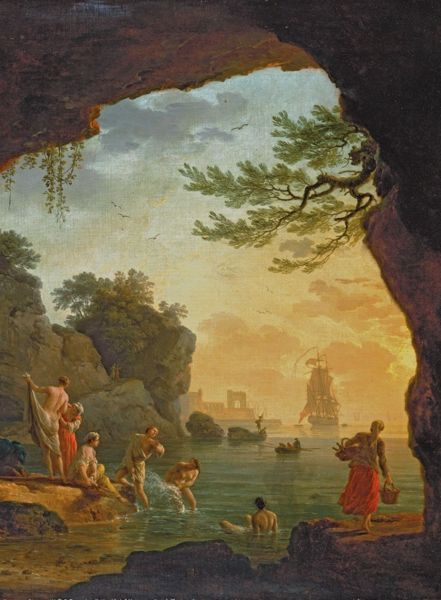
The princes’ abiding interest in antiquity was centred on the theme of Arcadia as evidenced in the neoclassical-style landscapes painted by Giovanni Paolo Panini, Claude Joseph Vernet and Hubert Robert. First appearing in the 17th century, the taste for urban landscapes known as ‘vedute’ continued to gain in popularity during the 18thcentury. The imaginary landscapes of Hubert Robert combined nature and the lyricism of ruins, a subject matter specific to the Enlightenment, in works such as

Claude-Joseph Vernet
(1714-1789)
Bathers
1759
oil
on convas, 66,5 x 82,5 cm
Liechtenstein.
The Princely Collections, Vaduz–Vienna
©
LIECHTENSTEIN. The Princely Collections, Vaduz–Vienna
This
piece entered the collections in 2007, acquired by Prince Hans-Adam I
The princes’ abiding interest in antiquity was centred on the theme of Arcadia as evidenced in the neoclassical-style landscapes painted by Giovanni Paolo Panini, Claude Joseph Vernet and Hubert Robert. First appearing in the 17th century, the taste for urban landscapes known as ‘vedute’ continued to gain in popularity during the 18thcentury. The imaginary landscapes of Hubert Robert combined nature and the lyricism of ruins, a subject matter specific to the Enlightenment, in works such as
Hubert
Robert (1733-1808)
Capriccio
with the Pantheon and the Porto di Ripetta
1761
oil
on canvas - 101,9 x 145,9 cm
Liechtenstein.
The Princely Collections, Vaduz–Vienna
©
LIECHTENSTEIN. The Princely Collections, Vaduz–Vienna
Capriccio with the Pantheon and the Porto di
Ripetta (1761), a prototype of the reception piece that would allow him to enter
the Académie Royale in 1766. Jan Davidszoon de Heem ranks high amongst the
Dutch and Flemish painters specializing in still lifes, a genre imbued with a
poetic, even metaphysical dimension.
KAROLINE,
FRANZ-JOSEF, MARIE FRANZISKA
Elisabeth
Vigée-Lebrun (1755-1842)
Portrait
of Princess Karoline von Liechtenstein, née Countess von
Manderscheidt-Blankenheim
(1768-1831), as Iris
1793
- oil on canvas - 222 x 159 cm
Liechtenstein.
The Princely Collections, Vaduz–Vienna
©
LIECHTENSTEIN. The Princely Collections, Vaduz–Vienna
The
famous French portraitist Elisabeth Vigée-Lebrun painted this portrait of the
wife of Prince Alois I during a sojourn in Vienna. Forced into exile between
1792 and 1795, the former official painter of Marie-Antoinette toured Europe
and painted portraits of aristocrats and high society.In 1793, she executed for
the Liechtenstein Palace on the Herrengasse, pendants of Princess Karoline as
Iris,
and of her sister-in-law, Maria Josepha Hermenegilde von Esterhazy, as Ariadne on Naxos.
Amongst the traditional attributes of Iris, the female messenger of the gods—usually represented with wings, the caduceus and winged shoes—the artist retains only the veil. The latter symbolizes the connection between heaven and earth, and is traditionally painted in the colours of the rainbow, although this is not the case here. In mythology, Iris is the personification of the rainbow and according to Homer, the rainbow represents the trail of Iris’s ‘storm-swift feet’ across the sky. This is why Vigée-Lebrun depicts the princess as flying in this portrait.
and of her sister-in-law, Maria Josepha Hermenegilde von Esterhazy, as Ariadne on Naxos.
Amongst the traditional attributes of Iris, the female messenger of the gods—usually represented with wings, the caduceus and winged shoes—the artist retains only the veil. The latter symbolizes the connection between heaven and earth, and is traditionally painted in the colours of the rainbow, although this is not the case here. In mythology, Iris is the personification of the rainbow and according to Homer, the rainbow represents the trail of Iris’s ‘storm-swift feet’ across the sky. This is why Vigée-Lebrun depicts the princess as flying in this portrait.
Friedrich
von Amerling (1803-1887)
Portrait
of Princess Marie Franziska von Liechtenstein (1834–1909) at the
age
of two,
1836
- oil on board - 56,7 x 50,5 cm
Liechtenstein.
The Princely Collections, Vaduz–Vienna
©
LIECHTENSTEIN. The Princely Collections, Vaduz–Vienna
In
1836, Friedrich von Amerling painted the tender portrait of Princess Marie
Franziska at age two, which is one in a series of portraits of the children of
Alois II. Close to the prince, of whom he painted an official portrait in 1845,
at that time Amerling was the preferred portraitist of the Liechtenstein
family. Ferdinand Georg Waldmüller, famous for his landscape paintings,
depicted the future Emperor, Franz Josef I of Austria at the age of two,
dressed in a soldier’s outfit, a kind of state portrait in miniature. The
Biedermeier style developed in Germany and Austria between 1815 and the
revolution of 1848. The Biedermeier style is evocative of a comfortable homely lifestyle,
and is characterized by its fine craftsmanship showcasing the materials and
regional expertise. In painting, the style is distinguished by its sensitive
approach to nature, meticulous execution and a predilection for the smaller
format. The Liechtenstein family played an important role in the spread of the
Biedermeier style. Their wealth, coupled with the desire to decorate some of
their homes in a more contemporary, less ornate style, for example the
Liechtenstein City Palace in Vienna, contributed to the style’s growing renown.
The Liechtenstein family is the owner of the most complete Biedermeier
collection in the world despite the sale of numerous pieces to the Wien Museum
and the Belvedere Museum.
Friedrich von Amerling
Lost in Her Dreams,
circa 1835 - oil on canvas - 55,3 x 45,1 cm
Liechtenstein. The Princely Collections, Vaduz–Vienna © LIECHTENSTEIN. The Princely Collections, Vaduz–Vienna
Ferdinand Georg Waldmüller
Portrait of the Future Emperor Franz Josef I of Austria (1830-1916) as a Grenadier with Toy Soldiers
1832 - oil on panel - 34,8 x 29 cm - Liechtenstein. The Princely Collections, Vaduz–Vienna
© LIECHTENSTEIN. The Princely Collections, Vaduz–Vienna


